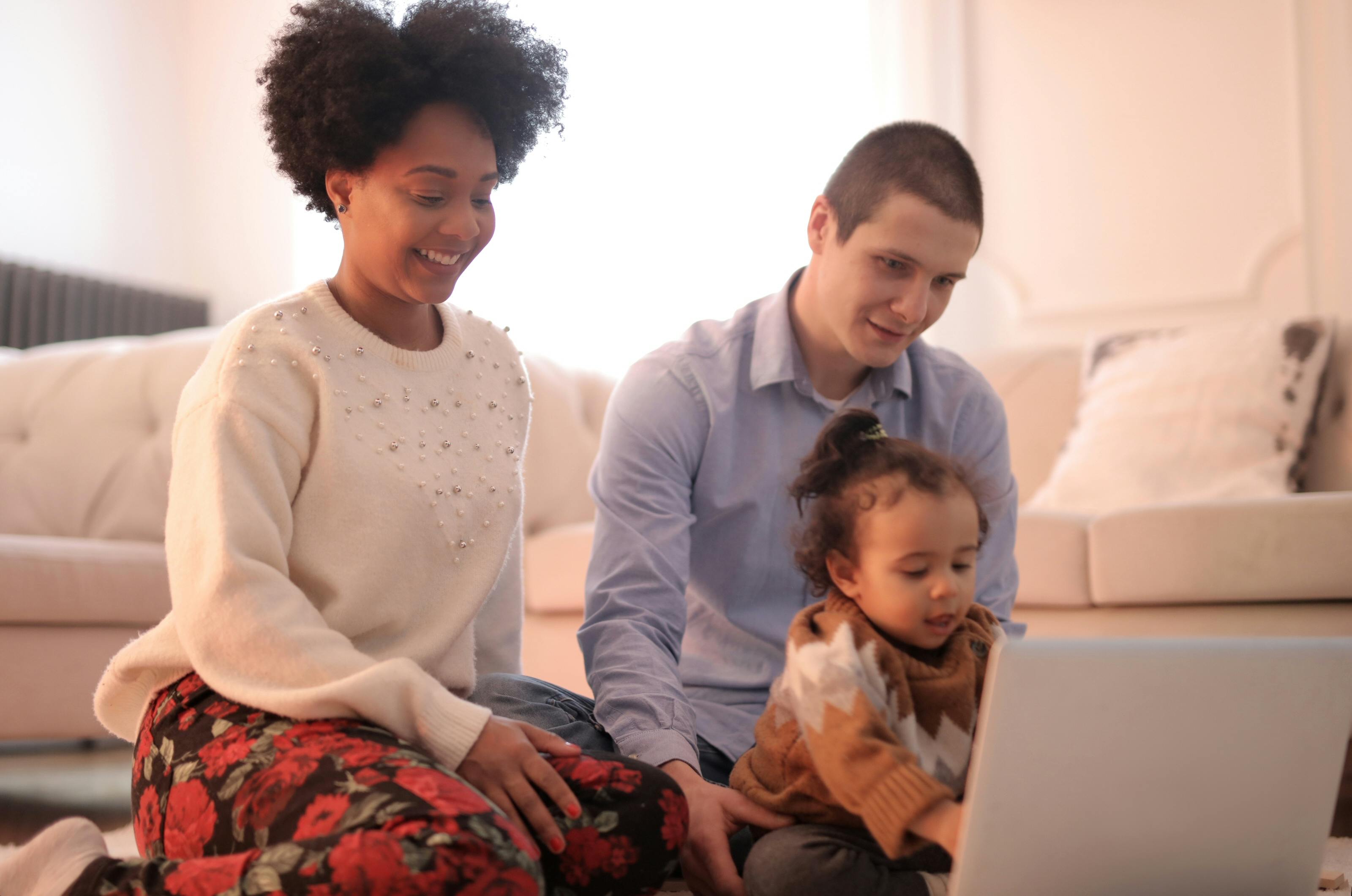Speaking two languages doesn't delay your toddler's speech development.
As a licensed speech-language pathologist who's spent over a decade helping families navigate their little ones' communication journeys, I see this harmful myth destroy confidence in bilingual households over and over again.
So let me set the record straight once and for all...
"Speaking multiple languages confuses babies."
"Pick one language until they're talking, then add the second."
"Bilingual children always talk later."
Sound familiar? If you've heard this "advice" from family, friends, or even professionals, you're not alone.
But here's the truth that every bilingual family deserves to know:
Decades of research prove that bilingualism does NOT cause speech delays.
In fact, research published in the American Speech-Language-Hearing Association's official journal states it unequivocally: "Bilingualism does not cause communication disorder, and prescribing monolingualism will not cure it".
According to the definitive textbook on bilingual language disorders, approximately 5-10% of multilingual children experience language delays - exactly the same percentage as monolingual children. This confirms that speaking multiple languages does not increase your child's risk of speech delays whatsoever.
"But My Bilingual Toddler Isn't Meeting Milestones..."
Here's where things get tricky (and why the myth persists).
Can a bilingual child experience speech delays? Absolutely.
But, this is the important part: the delays aren't caused by hearing multiple languages.
Think about it logically: if bilingualism caused delays, we'd see speech issues in every multilingual household across the globe. But we don't.
So what's really happening when a bilingual child seems "behind"?
Often, parents or professionals make a critical error: they compare a bilingual child's vocabulary in just ONE language to a monolingual child's total vocabulary.
Of course that doesn't add up!
When researchers look at bilingual children's combined vocabulary across both languages, these little ones are typically right on track or even ahead of their monolingual peers.
For example, if your 18-month-old says 15 words in English and 10 words in Spanish, that's 25 total words.
What to Do When Your Bilingual Child Has Real Delays
If your multilingual little one truly isn't meeting communication milestones, don't let anyone blame the languages you speak at home.
Instead, consider the same evidence-based factors that affect any child's speech development:
✅ Quality of interaction -- Are they getting enough face-to-face conversation?
✅ Communication strategies -- Are you using techniques that actually support language learning?
✅ Hearing health -- Have you ruled out any hearing concerns?
✅ Overall development -- Are there other areas to consider?
The beautiful thing? The same research-backed strategies that help monolingual children start talking work for bilingual families too. In my Raising Little Talkers course, I teach parents how to adapt these proven techniques across multiple languages, because good communication strategies are truly universal.
Research-Backed Approaches for Raising Your Child Bilingual
Here are four methods that work incredibly well:
Approach #1: One Parent, One Language (OPOL)
Each parent consistently speaks their native language with your child. This helps your little one learn to associate each language with a specific person.
Perfect for families where parents have different native languages. Research shows this creates strong foundations in both languages.
Approach #2: Minority Language at Home (MLaH)
Your family uses your heritage language exclusively at home, knowing your child will naturally absorb the majority language through school and community.
Especially powerful for maintaining cultural connections. Studies show this approach creates the strongest heritage language skills.
Approach #3: Time and Place
Different languages get used for specific activities, times, or locations. Maybe Mandarin during meals, English during playtime, or Portuguese for bedtime stories.
Research indicates this method helps children naturally compartmentalize languages and reduces mixing.
Approach #4: Flexible Language Use
Natural switching between languages based on situation and comfort level. This reflects real-world bilingual communication patterns.
Studies show this mirrors how most successful multilingual families actually communicate -- and it works beautifully.
The Science Behind Bilingual Brain Development
Here's what's actually happening in your bilingual child's developing brain:
Enhanced Executive Function: Switching between languages strengthens the brain regions responsible for attention, problem-solving, and cognitive flexibility.
Improved Metalinguistic Awareness: Bilingual children understand language as a system earlier than monolingual children, leading to better reading and writing skills later.
Stronger Cultural Intelligence: Research from Harvard shows bilingual children develop superior social understanding and empathy.
Long-term Academic Advantages: A comprehensive meta-analysis of bilingual research found consistent cognitive advantages, with bilingual students showing enhanced performance in areas requiring cognitive control and creative thinking.
What This Means for Your Family Right Now
If you're raising a bilingual child and someone has made you doubt your choices, please hear this:
You are giving your child an incredible gift.
Stop second-guessing yourself. Stop limiting the languages in your home. Stop listening to people who don't understand the research.
Your little one can absolutely learn to communicate in multiple languages, often faster than you think possible when you use the right strategies.
The key is implementing proven communication techniques consistently across both languages, creating rich language environments, and trusting the process.
Ready for more? If you're feeling overwhelmed about supporting your bilingual child's speech development, remember: you don't have to choose between languages. You just need the right strategies. Join me for my free workshop for parents of toddlers under age 3. I'll show you exactly why your toddler isn't talking yet and give you my proven 5-step method for helping them meet their milestones from home. Click here to save your spot!
Sources
Guiberson, M. (2013). Bilingual myth-busters series: Language confusion in bilingual children. Perspectives on Communication Disorders and Sciences in Culturally and Linguistically Diverse Populations, 20(1), 5-14.
Kohnert, K., Ebert, K. D., & Pham, G. T. (2021). Language disorders in bilingual children and adults (3rd ed.). Plural Publishing.
Poulin-Dubois, D., et al. (2011). Journal of Experimental Child Psychology, 108(3), 567-579.
Bialystok, E., & Martin, M. M. (2004). Developmental Science, 7(3), 325-339.
Adesope, O. O., et al. (2010). Review of Educational Research, 80(2), 207-245.










